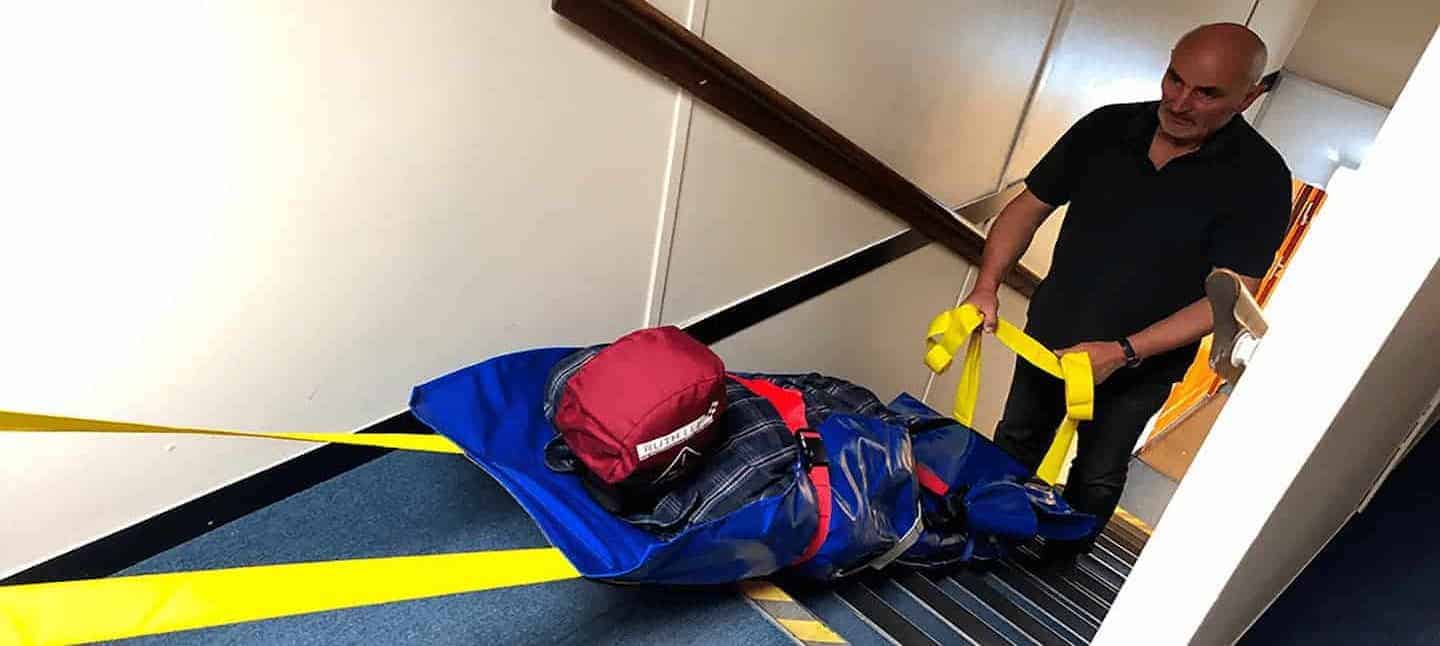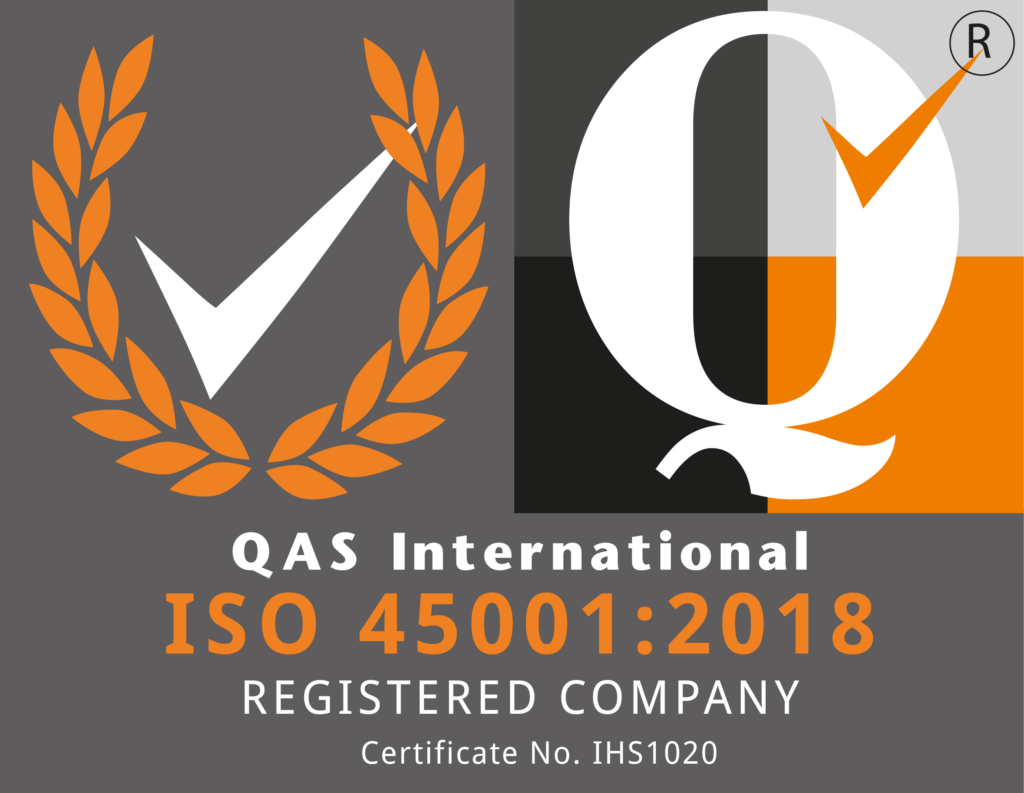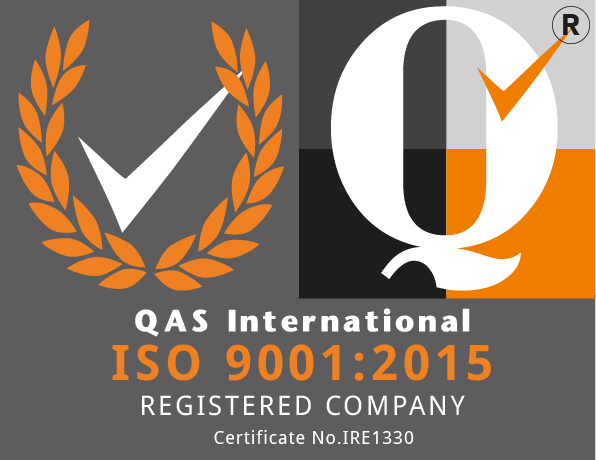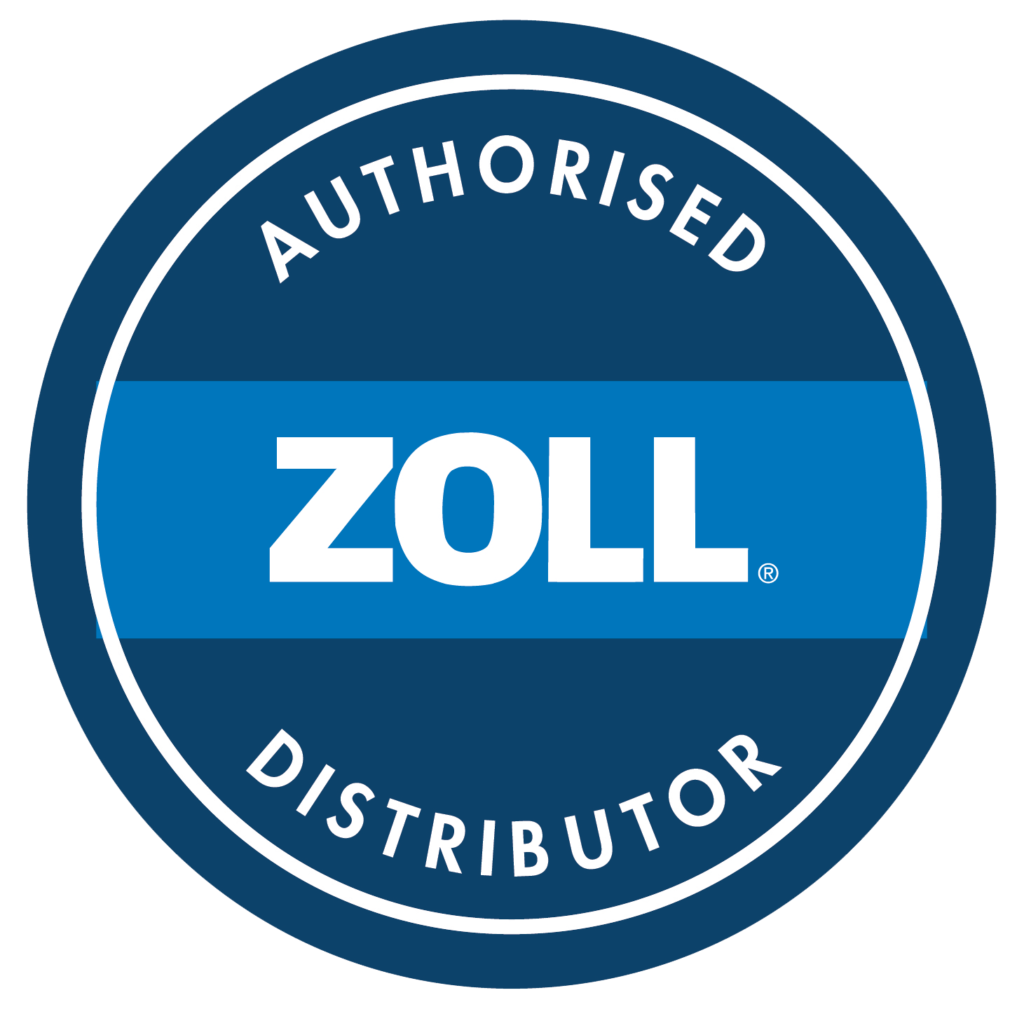Ireland’s First CPD-Certified Nursing Home Fire Safety Training
Setting the Standard for Resident Protection. Phoenix STS was Ireland’s first provider of officially recognised CPD certification for CPD-Certified Nursing Home Fire Safety Training. Phoenix STS has led the way in fire safety expertise for years, and our Nursing Home Fire Safety Training Programme embodies this commitment to excellence. We go beyond simply meeting regulatory checklists; we empower your staff to cultivate a truly proactive fire safety culture that prioritises resident well-being above all else.
Designed explicitly for Irish residential care facilities and elder care homes, our CPD-Certified Nursing Home Fire Safety Training course is meticulously crafted to ensure your team is compliant and truly prepared. This highly practical, 3-hour programme (80% hands-on) equips all nursing home staff with the essential skills and confidence to safeguard residents and respond effectively in any fire situation.
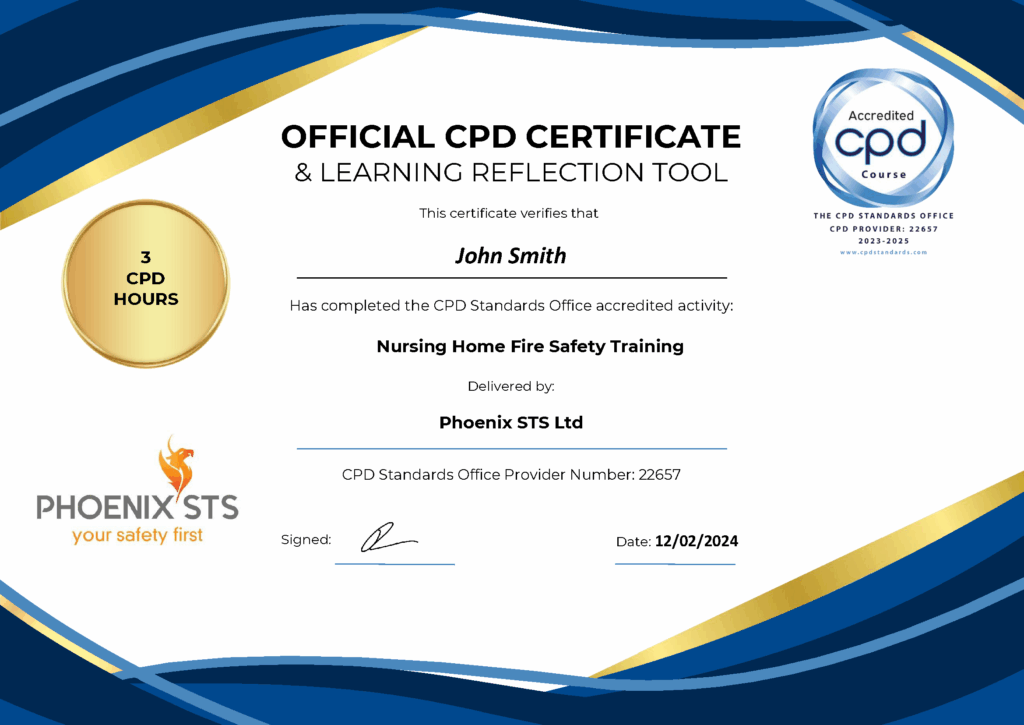
Our Trailblazing Training Programme Features:
- Official CPD Certification – Ireland’s First & Foremost: Invest in the gold standard of training – Phoenix STS is proud to be Ireland’s first and most recognised provider of CPD-certified fire safety training specifically for the nursing home sector, demonstrating your commitment to the highest training standards and professional development.
- Guaranteed HIQA Regulatory Compliance: Ensure your nursing home rigorously meets all Ireland’s Health Information and Quality Authority (HIQA) fire safety standards requirements. Our course is meticulously designed to cover every aspect of HIQA regulations, providing peace of mind and demonstrably robust safety protocols.
- Practical, Hands-On Skills Focus (80% Practical Training): Benefit from a predominantly practical training approach with 80% of the programme dedicated to hands-on activities. Staff will gain real-world experience using evacuation equipment like Ski Evacuation Sheets and Ski Pads and receive comprehensive training on portable fire extinguishers – skills critical for effective resident safeguarding.
- Expertly Designed for the Nursing Home Environment: Our Nursing Home Fire Safety Training programme is specifically engineered for the unique challenges of Irish residential care facilities. We address the fire risks and evacuation considerations within nursing homes, ensuring highly relevant and immediately applicable training for your staff.
Choose Phoenix STS and equip your team with more than basic training—equip them with the pioneering, CPD-certified expertise necessary to protect your residents and set a new standard for fire safety in your nursing home.
Benefits of CPD-Certified Nursing Home Fire Safety Training
For Resident Safety & Wellbeing:
- Enhanced Resident Protection: The primary and most crucial benefit is equipping staff with the knowledge and skills to effectively prevent, manage, and respond to fire emergencies, directly safeguarding the vulnerable residents under their care.
- Improved Evacuation Procedures: CPD training focuses on practical skills and drills, ensuring that staff are competent in executing efficient and safe evacuation procedures and minimising risk and confusion during a real fire.
- Reduced Panic & Increased Calm: Well-trained staff are less likely to panic in an emergency. CPD-certified training instils confidence and calms under pressure, leading to a more controlled and effective response, directly benefiting resident safety.
For HIQA Compliance & Regulatory Standards:
- Demonstrable Compliance: CPD certification proves your staff have received high-quality, industry-recognised fire safety training. This is essential for meeting HIQA (Health Information and Quality Authority) and other regulatory body requirements in Ireland and demonstrates a commitment to safety and best practices.
- Meeting Legal Obligations: Fire safety training for nursing homes is legally required. CPD certification strengthens your evidence of fulfilling these legal duties, reducing the risk of penalties, legal challenges, or adverse inspection outcomes.
- Staying Up-to-Date with Best Practices: CPD training ensures staff learn the most current fire safety regulations, best practices, and techniques. Regulations and fire safety knowledge evolve, so ongoing CPD keeps your team’s knowledge current and effective.
For Staff Professional Development & Confidence:
- CPD Points & Professional Growth: CPD certification contributes to staff members’ Continuing Professional Development, demonstrating their commitment to ongoing learning and enhancing their professional profiles within the care sector.
- Increased Staff Competence & Confidence: Hands-on, CPD-certified training boosts staff confidence in their fire safety abilities. They will feel more prepared and capable of acting decisively in an emergency, improving overall team performance and morale.
- Enhanced Skills & Knowledge: CPD courses go beyond essential awareness, providing in-depth knowledge of fire prevention, fire behaviour, extinguisher use, evacuation strategies, and other critical aspects of fire safety, leading to a more skilled and knowledgeable workforce.
For Organisational Reputation & Risk Management:
- Improved Reputation & Trust: High-quality, CPD-certified training enhances your nursing home’s reputation as a safe, responsible, and well-managed facility. This builds trust with residents, families, and the wider community.
- Reduced Insurance Premiums (Potentially): Demonstrating a strong commitment to fire safety, evidenced by CPD-certified training, may lead to more favourable insurance premiums from some providers, as it reduces the perceived risk. (This should be explored with your insurance provider).
- Minimised Risk of Fire Incidents: Proactive, comprehensive training is the most effective way to prevent fires. By fostering a fire safety and vigilance culture, CPD-certified training helps minimise the risk of fire outbreaks, protecting residents, staff, and the facility itself.
- Cost Savings in the Long Run: While training is an investment, preventing a fire incident avoids potentially devastating financial costs associated with property damage, legal liabilities, business interruption, and, most importantly, harm to residents.
In summary, CPD-Certified Nursing Home Fire Safety Training is a vital investment. It’s not just a tick-box exercise for compliance but a proactive measure that enhances resident safety, empowers staff, protects your organisation, and fosters a culture of safety and preparedness.
Product Information DVD Only
CPD-Certified Nursing Home Fire Safety Training
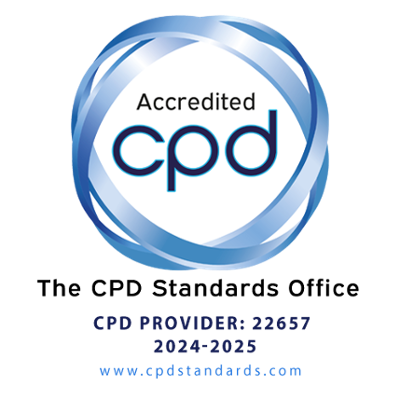
Phoenix STS is the exclusive provider of nursing home fire safety training courses that may award CPD points officially recognised by The CPD Standards Office. This accreditation underscores our commitment to delivering high-quality education and professional development opportunities. Our program is crafted with an Ireland-specific focus, ensuring the training is relevant and tailored to meet Irish nursing home’s unique fire safety needs. By aligning our curriculum with Ireland’s HIQA – Fire Precautions (Regulation 28), we guarantee that our course remains current with the latest fire safety regulations, aiding facilities in maintaining compliance. We strongly emphasise practical, hands-on training, equipping nursing home staff with the skills to effectively respond to real-world fire safety scenarios. This comprehensive approach sets Phoenix STS apart, making it the go-to choice for nursing homes seeking accredited, regulation-compliant fire safety training in Ireland.
Course Relevance to HIQA Regulations
Staff undergo rigorous, timed compartment fire drills independently of our fire safety awareness course. These drills are crucial for demonstrating compliance with HIQA – Fire Precautions (Regulation 28). Our course aligns with the “Fire Safety Handbook: a Guide for Providers and Staff of Designated Centres,” published by HIQA in 2025.
Importance of High-Quality Fire Staff Training in Nursing Homes
Staff knowledge and training in reducing fire risks and implementing fire procedures are essential for the safety of everyone in the nursing home, from residents to visitors. This involves not only understanding potential hazards but also effectively managing emergencies. Daily awareness of fire safety measures, including regular checks of fire alarms and safety equipment, is as crucial as structured emergency training. Our comprehensive course ensures staff are adept at fire prevention, detection, and swift evacuation processes. By fostering a culture of safety and preparedness, we aim to significantly reduce the risk of fatal incidents and enhance overall safety in the nursing home. Additionally, our training incorporates the latest fire safety technologies and methodologies, ensuring your team is equipped with up-to-date knowledge and skills.
Course Details and Additional Training Opportunities
Rescue training manikins are utilised for optimal safety during evacuation equipment training. We also offer a Nursing Home Fire Safety Manager Training Course for staff needing further instruction after the course. This course prepares you to be a central figure in fire safety within the Nursing Home, with access to expert advice from a Fire Engineer.
Comprehensive Emergency Management Systems
Our Nursing Home Emergency Management Systems cover all facets of fire safety, health & safety, and emergency management in nursing homes. We believe in a tailored approach to ensure your staff can handle emergencies effectively.
Phoenix STS is an Authorised Training Provider
Phoenix STS is an established provider that has been approved to deliver specialised fire safety courses. We bring expertise in nursing home and residential care fire safety. All instructors for this programme are experienced fire safety professionals—many are qualified fire safety engineers or former fire officers with extensive knowledge of healthcare environments.
Phoenix STS is officially authorised to provide comprehensive training on using Ski Evacuation Products from Hospital Aids and the Versa Family Evacuation Chairs from Exitmaster. This endorsement ensures that our instructors deliver up-to-date, manufacturer-approved guidance, equipping learners with the expertise to train healthcare staff to deploy these critical evacuation tools effectively. The Ski Evacuation Sheet by Hospital Aids is designed to securely cocoon non-ambulatory residents within their mattresses, facilitating swift and safe movement during emergencies. The Versa Elite Evacuation Chair by Exitmaster offers enhanced passenger comfort and safety features, including additional handles for improved manoeuvrability along corridors.
Course Aims
- To provide comprehensive fire safety training tailored for healthcare staff in nursing homes, ensuring the safety of staff, residents, and visitors.
- This is to ensure compliance with HIQA’s Regulation 28 on Fire Precautions, as outlined in the Health Act 2007 (Care and Welfare of Residents in Designated Centres for Older People) Regulations 2013.
Key Course Objectives of the Nursing Home Fire Safety Training Course
- Equip healthcare staff with practical knowledge and skills to handle fire emergencies effectively, including fire prevention, hazard identification, and hands-on experience with the latest fire safety technologies.
- Prepare staff to respond swiftly and efficiently to a fire, ensuring the safety of all individuals within the facility.
- Train staff in safe evacuation procedures, including using evacuation equipment and participation in drills, to lead and assist residents and visitors during fire emergencies.
- Maintain and reinforce consistent fire safety procedures throughout the nursing home, emphasising regular checks on fire alarms and safety equipment and adherence to daily fire safety measures.
- Ensure the facility complies with HIQA’s (Regulation 28) on Fire Precautions, meeting regulatory requirements and best practices in fire safety.
Who is the Nursing Home Fire Safety Training Course For?
Our standard Fire Safety course is designed for all staff working within a nursing home, ensuring everyone is equipped with the essential knowledge and skills to maintain a safe environment. This course is equivalent to a fire warden course; however, it is essential to note that the term “fire warden” is not applicable within a nursing home environment. Instead, the term “senior clinical person” is better used to reflect the roles and responsibilities within this setting. By participating in this course, all nursing home staff will thoroughly understand fire safety practices, emergency response protocols, and regulatory compliance, ensuring the safety and well-being of residents and staff alike.
Staff Pre-Course Requirements
- English Language Proficiency: Fluency in English is essential for effective communication during the training. Learners must be able to understand, speak, read, and write in English to fully engage with the course material and participate actively in discussions.
- Appropriate Attire for Practical Training: Learners should wear clothing that allows them to move freely during practical sessions. This ensures their safety and comfort while performing hands-on activities related to evacuation procedures.
- Disclosure of Relevant Medical Conditions: To maintain safety during practical modules, learners must disclose any medical conditions that could make physical activities unsafe. This information will be treated confidentially and used solely to ensure the well-being of all learners during the course.
- Certification in People Moving and Handling: Before commencing the course, learners must provide a valid certification in people moving and handling. This certification ensures that learners possess the foundational skills necessary for safely moving individuals, which is critical for effective evacuation procedures. Courses such as the People Moving Course provide relevant certification.
- If you are not trained in people moving, the senior clinical person will advise you on assisting during a live incident as part of a dynamic risk assessment.
What You’ll Learn on the Nursing Home Fire Safety Training Course
Our Nursing Home Fire Safety Training Course is designed to be both comprehensive and highly practical, ensuring all staff are thoroughly prepared to prevent, detect, and respond to fire emergencies effectively. The 3-hour programme is structured into key modules to maximise learning and skill development:
Module 1: Fire Safety Essentials – Classroom Presentation (Theoretical Foundations). This engaging classroom presentation provides the essential theoretical knowledge that underpins effective fire safety practices in a nursing home setting. In this module, staff will:
- Master Fire Prevention Strategies: Learn proactive strategies and best practices to significantly reduce fire risk within the nursing home environment, creating a safer setting for residents and staff.
- Become Fire Hazard Recognisers: Develop a keen eye for identifying potential fire hazards within various nursing home settings, from resident rooms and communal areas to kitchens and storage spaces.
- Understand Fire Types & Classification: Gain a clear understanding of the different classes of fire (e.g., Class A, B, C, F) and learn about the unique characteristics of each type to inform appropriate responses.
- Learn Correct Emergency Response Protocols: Master the correct and immediate actions in different fire scenarios to ensure a swift, safe, and effective initial response to contain incidents.
- Train in Responding to Clothing Fires: Receive specific and practical training on the protocol for assisting residents whose clothing may catch fire, a critical skill in a care home environment.
- Gain Insight into Irish Fire Safety Regulations: Receive a clear and concise overview of relevant Irish fire safety regulations and best practices, ensuring awareness of legal responsibilities and compliance standards.
- Ensure Regulatory Compliance and Enhance Safety Culture: Understand how theoretical knowledge directly translates into practical compliance and enhances the nursing home’s overall fire safety culture.
Module 2: Facility Fire Safety – “Walk and Talk” Orientation (Practical Awareness)
This interactive “Walk and Talk” session provides a crucial practical orientation to your specific nursing home facility. Staff will actively engage in:
- Facility Fire Safety Feature Identification: Participate in a guided nursing home tour, directly identifying and locating key fire safety features within your environment.
- Emergency Exit and Assembly Point Familiarisation: Become intimately familiar with the locations of emergency exits and designated assembly points within the facility, ensuring swift evacuation planning and execution.
- Fire Alarm System Understanding & Location: Learn about the nursing home’s fire alarm system, including the location of call points and the meaning of alarm signals, ensuring prompt awareness of fire incidents.
- Fire Safety Equipment Location & Awareness: Identify the locations of various fire safety equipment throughout the facility (beyond extinguishers).
- Facility-Specific Emergency Procedure Review: Gain practical insight into and reinforce understanding of your nursing home’s specific fire safety layout and established emergency protocols, ensuring staff operate effectively within your unique environment.
- Boost Staff Confidence in Facility Navigation during Emergencies: By directly and practically familiarising staff with the layout and safety features, you can enhance their confidence in navigating the facility quickly and efficiently during a fire emergency.
Module 3: Practical Fire Extinguisher Use – Hands-On Training (Equipment Proficiency)
This essential hands-on training module provides staff with practical experience in using portable fire extinguishers, building confidence and competence in equipment operation:
- Hands-On Fire Extinguisher Operation: Engage in direct, hands-on practice using a range of portable fire extinguishers, gaining practical familiarity with their weight, operation, and discharge.
- Learn Correct Fire Extinguisher Types for Different Fires: Gain practical knowledge of matching the correct fire extinguisher to different classes of fire, ensuring appropriate and effective equipment selection in emergencies.
- Master Safe & Effective Fire Extinguishing Techniques: Practice and master the correct techniques for safely and effectively operating a fire extinguisher to suppress and extinguish small, contained fires, building practical skills and confidence.
- Build Confidence in Emergency Fire Response: Develop increased confidence and reduced hesitation in responding to small fires, effectively knowing how to use extinguishers as a first line of defence.
- Understand Fire Extinguisher Maintenance & Limitations: Gain awareness of basic fire extinguisher maintenance checks and the limitations of portable extinguishers, recognise when to evacuate and the importance of calling for professional fire services irrespective of the size of the fire.
Module 4: Evacuation Equipment & Techniques – Practical Session (Resident Evacuation Skills)
This critical practical module focuses on equipping staff with the skills and confidence to safely evacuate residents, including those with mobility challenges, using specialised equipment:
- Practical Training with Ski Evacuation Sheets & Pads: Receive specialised hands-on training in correctly and safely using Ski Evacuation Sheets and Ski Pads (or similar evacuation aids relevant to your facility).
- Master Safe Resident Evacuation Techniques: Practice proven techniques for the safe and efficient evacuation of residents, prioritising resident well-being and minimising risk of injury during emergency egress.
- Practice Evacuation Procedures for Residents with Mobility Issues: Specifically focus on practising evacuation techniques tailored for residents with varying levels of mobility, ensuring inclusivity and preparedness for diverse resident needs.
- Develop Skills to Lead and Assist in Evacuations: Build the skills to confidently lead and effectively assist residents during evacuation procedures, maintaining calm and order to ensure smooth and safe egress.
- Enhance Staff Preparedness for Real Evacuation Scenarios: Increase staff preparedness and reduce anxiety related to resident evacuation, ensuring a more confident and effective response in real fire emergency evacuation scenarios.
- Understand Equipment Maintenance & Storage (Evacuation Aids): Gain essential awareness of the proper maintenance and storage requirements for evacuation equipment, ensuring equipment readiness when needed.
Our Nursing Home Fire Safety Training Course goes beyond simply “ticking a box.” It’s about providing your team with practical, hands-on skills and essential knowledge, fostering a culture of proactive fire safety, and ensuring the highest level of protection for your residents and staff.
Training Area Requirements
- The centre must provide suitable training areas in line with government guidelines on the management of COVID-19.
- The centre will be required to supply equipment on-site for this training (profiling beds, including bed linen).
- Where the building has multiple stories, the bedrooms for the evacuation training should be as close as possible to a lift and the stairwell to facilitate the movement of the rescue training manikin.
Our Instructors
Our instructors, experienced in providing fire safety training in a healthcare setting, are the backbone of our course. They will outline the staff’s duties and roles in preventing fire and provide a comprehensive understanding of the necessary actions to respond to a fire within a nursing home. Our instructors are members of professional bodies such as NAHFO, IFE, IOSH, IIESMS, IIRSM, IHEEM, and L&DI. They are also qualified as People Moving and Handling and Evacuation Equipment Instructors and are Infection Control and Safeguarding Adults Qualified, ensuring you receive the highest quality of education. Additionally, all our instructors have achieved a minimum level of recognition with the Institute of Industrial Engineers and Safety Management Systems (IIESMS) at the Fire Safety Technician (FST.IIESMS) level, further ensuring the excellence and reliability of our training programmes.
The CPD-Certified Nursing Home Fire Safety Training Methods
Our standard fire safety course is designed to equip healthcare staff in nursing homes with essential fire safety knowledge and practical skills. This comprehensive course includes the following elements:
- PowerPoint Presentation
- Theory Element: Our course’s theoretical component is delivered through an engaging PowerPoint presentation. This segment covers crucial topics such as fire prevention strategies, identification of potential fire hazards, understanding different types of fires, and appropriate response measures.
- Interactive Q&A Sessions: Each presentation is followed by an interactive question-and-answer session. This allows learners to clarify doubts, engage in discussions, and deepen their understanding of fire safety principles. Our expert tutors can provide detailed answers and practical insights based on real-world experience.
- Demonstration and Practice with Portable Fire Extinguishers and Evacuation Equipment
- Hands-On Demonstration: Learners will receive a live demonstration on correctly using various portable fire extinguishers. This includes understanding which extinguishers to use for different classes of fire and learning the proper techniques for operating them effectively.
- Practical Training: After the demonstration, learners will practice using portable fire extinguishers. This practical experience is crucial for building confidence and ensuring staff can respond swiftly and effectively during a fire.
- Evacuation Equipment Training: The course also includes comprehensive training on the use of evacuation equipment. Staff will learn how to safely and efficiently evacuate residents using equipment such as ski evacuation products and ski pads, including those with mobility issues.
- Realistic Scenarios: Practical sessions use realistic scenarios that simulate fire emergencies to enhance learning. This approach helps learners understand the dynamics of fire emergencies and practice their response in a controlled environment.
Our standard fire safety course ensures that nursing home staff are well-prepared to handle fire emergencies, protect residents, and maintain a safe environment. By combining theoretical knowledge with practical skills, we aim to create a culture of safety and preparedness within your facility.
Assessment and Certification
The qualification achieved upon completing this fire safety course relies heavily on site-specific information, making it tailored exclusively to the particular nursing home environment in which the training was conducted. Due to the unique layout, evacuation procedures, and specific fire safety measures that differ from one facility to another, any qualifications obtained are not transferable to another nursing home.
Assessment Components
- Evacuation Equipment and Portable Fire Extinguishers: Learners will be assessed on their safe use of evacuation equipment and portable fire extinguishers, ensuring they can effectively handle these tools during an emergency.
- Fire Drill Completion: Learners must complete a fire drill, demonstrating their ability to implement the evacuation procedures and respond promptly and correctly during a fire emergency.
Certification
Phoenix STS Training Official CPD Certificate: Upon completing the course, learners will receive the Phoenix STS Training Official CPD Certificate. This certificate is valid for 1 year and recognises the participant’s competence in fire safety within their specific nursing home environment.
Maximum Number of Learners
To ensure the highest quality of practical skills training and individual attention, the course intake is capped at ten (10) clinical staff (6) and six non-clinical staff. This cap allows for practical hands-on learning and ensures that each participant receives the necessary guidance and support to master fire safety procedures.
Course Duration
The course lasts 3 hours and includes clinical and non-clinical staff. As this course is CPD certified, learners must attend the whole course to achieve CPD certification.
Frequently Asked Questions
Is fire safety training mandatory for nursing homes in Ireland?
Fire safety training is legally required under the Health Act 2007 (Care and Welfare of Residents in Designated Centres for Older People) Regulations 2013 (S.I. No. 415/2013). Regulation 28 mandates that nursing homes implement fire safety measures, including staff training, to protect residents. The Health Information and Quality Authority (HIQA) enforces compliance during inspections, and facilities failing to meet standards risk penalties or closure.
What are the fire safety regulations for nursing homes in Ireland?
Key regulations include:
- Fire Services Act 1981 as amended 2003: Outlines fire prevention duties.
- Safety, Health and Welfare at Work Act 2005: Requires employers to provide safety training.
- Health Act 2007: Requires fire safety protocols and staff training.
- HIQA’s Fire Precautions (Regulation 28): Specifies fire risk assessments, emergency plans, and evacuation procedures.
- Building Control Regulations: Governs fire-resistant construction and compartmentation.
Does nursing home fire safety training need to meet HIQA standards?
Yes. HIQA requires training programs to align with Regulation 28, emphasising evacuation procedures, fire risk assessments, and equipment use. Phoenix STS courses explicitly comply with these standards, incorporating HIQA’s guidelines.
How often should nursing home staff receive fire safety training?
HIQA mandates annual training. Phoenix STS certifications expire after one year, requiring refresher courses. Additional drills (e.g., monthly fire drills) are recommended to maintain readiness.
Is there a legal requirement to appoint fire wardens in Irish nursing homes under fire safety legislation?
No, Irish fire safety legislation does not explicitly mandate the appointment of fire wardens in nursing homes. Under the Fire Services Act 1981 (as amended in 2003), the responsibility for fire safety lies with the “person having control” of the premises (typically the nursing home owner/manager). HIQA’s Fire Safety Handbook (2025) instead emphasises role-specific training for all staff, requiring them to:
- Conduct evacuations (Regulation 28).
- Operate firefighting equipment.
- Implement emergency plans.
The legislation prioritises collective staff competency over designated fire wardens. This approach ensures all caregivers, including those directly assisting residents, can respond effectively during emergencies.
What legal risks arise from using staff members as training manikins during fire drills?
Using staff as training manikins during fire drills poses significant legal and safety risks:
- Health & Safety Violations: Under the Safety, Health and Welfare at Work Act 2005, employers must avoid exposing staff to unnecessary risks, placing staff in evacuation devices (e.g., ski sheets) during drills, risking physical injury (e.g., musculoskeletal strain) and psychological harm.!
- Non-Compliance with HIQA Standards: HIQA’s Fire Safety Handbook (2025) states that drills must use “realistic but safe methods,” explicitly discouraging the use of live persons for evacuation simulations. Training mannequins are required to ensure drills align with safety protocols.
- Liability Issues: Injuries sustained during drills could lead to workplace liability claims under the Personal Injuries Assessment Board Act 2003.
Phoenix STS’s CPD-certified courses mandate manikin use to mitigate these risks and comply with legislation.
What specific legislation governs fire safety training frequency in Irish nursing homes?
The Health Act 2007 (Care and Welfare of Residents in Designated Centres for Older People) Regulations 2013 (S.I. No. 415/2013) mandate:
- Annual Fire Safety Training (Regulation 28): All staff must complete refresher training yearly.
- Regular Fire Drills: While not legislatively defined, HIQA’s Fire Safety Handbook recommends monthly drills to ensure preparedness.
Non-compliance can result in enforcement actions, including fines or facility closure under Section 64 of the Health Act 2007.
Are nursing homes legally required to document fire safety training?
Yes. Regulation 28(1)(c)(i) of S.I. No. 415/2013 requires nursing homes to maintain detailed records of:
- Training dates, content, and attendee lists.
- Fire drill outcomes, including evacuation times and issues identified.
- Equipment maintenance logs (e.g., fire extinguishers, alarms).
- HIQA inspectors routinely audit these records during unannounced inspections.
What accreditation should a fire safety training provider have to deliver courses for nursing homes?
Training providers should hold CPD certification from a recognised body (e.g., CPD Certification Service, CPD Standards Office or The CPD Group) and demonstrate alignment with HIQA’s Fire Safety Handbook. While not legally mandated, CPD certification ensures content meets national professional standards.
- CPD Certification: Ensures training aligns with Continuing Professional Development standards.
- HIQA Recognition: Courses must explicitly reference compliance with the Health Act 2007 and HIQA’s Fire Safety Handbook.
- Legislative Requirement: While accreditation is not explicitly mandated, HIQA requires providers to demonstrate competency during inspections.
How can a nursing home verify that a provider’s instructors are members of professionally recognised bodies?
Require the provider to supply proof of instructors’ memberships in bodies like the Institution of Fire Engineers (IFE), Institution of Occupational Safety and Health (IOSH), or Institute of Industrial Engineers & Safety Management Systems (IIESMS)—Cross-check membership status via the respective organisation’s online directory.
Is professional indemnity insurance a legal requirement for fire safety training providers in Ireland?
No, but reputable providers should hold professional indemnity insurance to cover liabilities arising from training. Nursing homes should request a copy of the provider’s insurance certificate as part of due diligence.
What evidence should a provider supply to show their training is CPD-accredited?
Providers must present a valid CPD certification number and accreditation details from a recognised body (e.g., CPD Certification Service, CPD Standards Office or The CPD Group). Certificates should explicitly state the course’s alignment with healthcare fire safety standards.
How can a provider demonstrate the competency of their instructors?
Request the instructor’s CVs and certifications of qualifications in fire safety or Safety and Health.
What documentation proves a training provider’s content meets HIQA standards?
Providers must supply:
- A course syllabus mapping content to HIQA’s Regulation 28 (S.I. No. 415/2013).
- Sample training materials show evacuation drill coverage, risk assessments, and equipment use.
- References/testimonials from other HIQA-compliant healthcare facilities.
HIQA inspectors may audit these documents during inspections.

